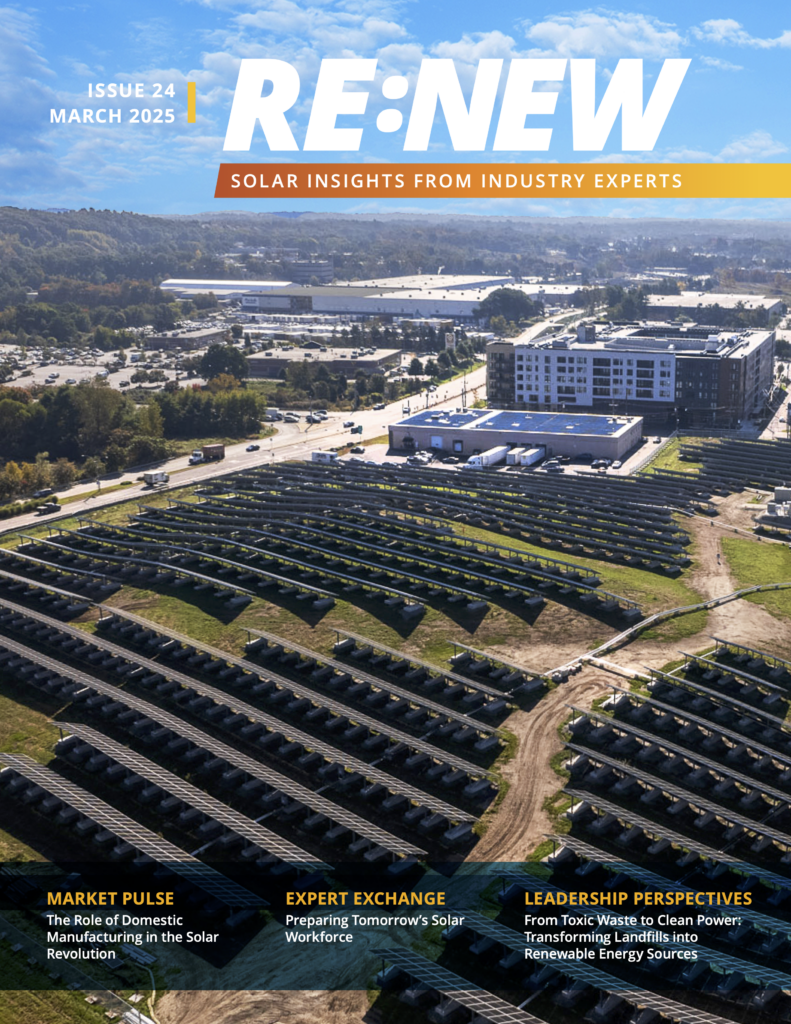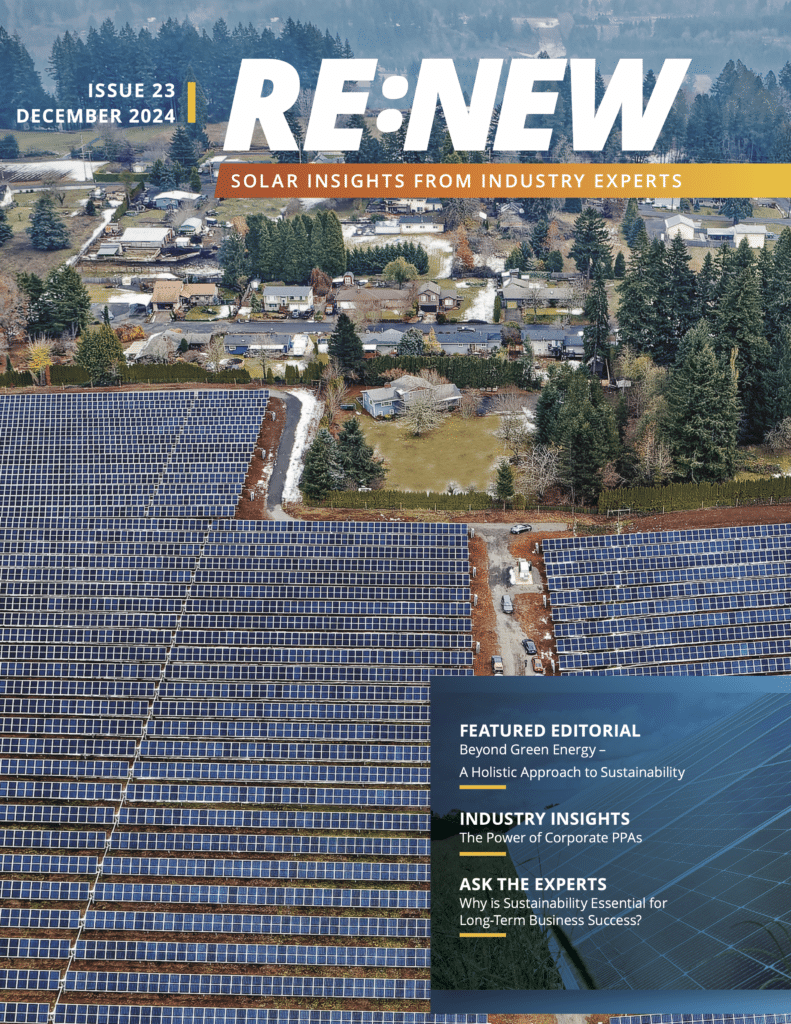A new 7.4 megawatt (MW) community solar project developed by the Catholic University of America of Washington D.C. and Standard Solar will generate about 10,000 MWh of solar energy each year, reducing greenhouse gas emissions by an estimated 7.115 metric tons annually. This offset is equivalent to removing 1,547 cars from the roads each year.
As the largest community solar array in the area, it will bring the benefits of renewables to members of the community who might not normally have access to solar. The project will also help advance D.C.’s goal of reaching 100% renewable energy by 2032 and carbon neutrality by 2050.
“The new solar installation reaffirms the University’s renewable energy leadership. By caring for our common home, this new opportunity allows our neighbors to share clean energy benefits,” said Alexandra Harry Nappier, director of campus sustainability for the University.
A Construction Process Grounded in Sustainable Practices
The project includes aspects that help mitigate its impact on the local environment. The array is being installed on an undeveloped portion of the 173.4-acre campus called the west campus (the west side of Harewood Rd., across from Leahy Hall), and the University has arranged for many of the trees being removed to be salvaged by the District of Columbia’s Urban Forestry Division. The logs will be milled into benches and stump seating that will be donated to local schools and parks. Wood byproducts will go to the University of the District of Columbia’s Center for Urban Agriculture, and higher-quality wood will be milled into lumber and donated to schools and nonprofits.
Additionally, The University will use wood chips from the brush at the Community Garden behind Curley Hall and within the preserved forests on the west campus to help suppress invasive species and improve the habitat. Casey Trees will also use chips for its Community Tree Planting program. The array will be surrounded by a perimeter screen of trees and pollinator habitat plantings.
“Harvesting and repurposing these trees locally lessens the waste and cost of disposal and helps reduce the city’s reliance on lumber transported from elsewhere, reducing emissions and supporting our local communities,” said Greg Osband, the University’s program manager for landscape architecture.
A Partnership that Forwards Sustainability in Education and the Wider Community
Standard Solar will own, operate and maintain the system that will bring clean energy savings to countless D.C. residents, nonprofits and businesses. With a portfolio of more than 300 MW of solar, Standard Solar has helped several educational institutions in the northeast and across the country achieve environmental and operational sustainability. The economics of projects like the one for Catholic University is ideal for schools and universities as they help free up funds for educational activities.
Additionally, the effects of such projects can be far-reaching. “The new solar installation reaffirms the University’s renewable energy leadership. By caring for our common home, this new opportunity allows our neighbors to share clean energy benefits,” said Alexandra Harry Nappier, Director of Campus Sustainability for Catholic University.
By choosing to install a community solar array, the university will be deepening its impact on the surrounding communities. “Catholic University is showing tremendous leadership with this innovative solar project to bring clean energy to the region,” said John Finnerty, Director of Business Development, Standard Solar. “The project goes beyond expanding the University’s sustainability initiatives and environmental stewardship to directly creating benefits for the Washington, D.C. community and generations of students.”
Catholic University’s Longtime Commitment to Green Practices
The University has indeed demonstrated a profound commitment to sustainability and environmental stewardship. They’ve already installed 2,700 solar panels and have four LEED-certified buildings, EV charging stations, and a recently upgraded central hot and chilled water generation and campus distribution system. Leadership has also established a five-year Sustainability Plan, and the university was one of the first institutions to sign onto a Vatican initiative regarding environmental sustainability.
The University is also listed as a Green College by the Princeton Review, and since 2016, carbon emissions on campus have declined by 28%. As a certified Tree Campus for Higher Education, they undertook a tree survey this year and are developing a plan for ongoing management of all trees on campus.
The new community solar project will provide educational opportunities for sustainability and environmental stewardship, and students will be able to access a real-time, web-based energy production monitoring tool. The university currently offers more than 150 courses related to sustainability.
More Recent Blog Posts
Building an Enduring Solar Legacy in America’s Next Energy Era
June 9, 2025
Rick Berube · 2 min read
Beyond Panels: How The Catholic University of America Cultivates Holistic Sustainability Through Solar
May 13, 2025
John Finnerty · 4 min read
Celebrating 20 Years of Transforming the Energy Landscape
December 12, 2024
Scott Wiater · 5 min read
Honoring Our Past To Build Our Future
November 18, 2024
Scott Wiater · < 1 min read
Most Popular Blog Posts
How To Create A Complete Commercial PV Design Package
CJ Colavito · 3 min read
Navigating Solar Policy in Uncertain Times: Standard Solar’s October Policy Brief
Trevor Laughlin · 3 min read
Neville Williams: Standard Solar’s Standard Bearer
Tony Clifford · 3 min read
Building an Enduring Solar Legacy in America’s Next Energy Era
Rick Berube · 3 min read





Share